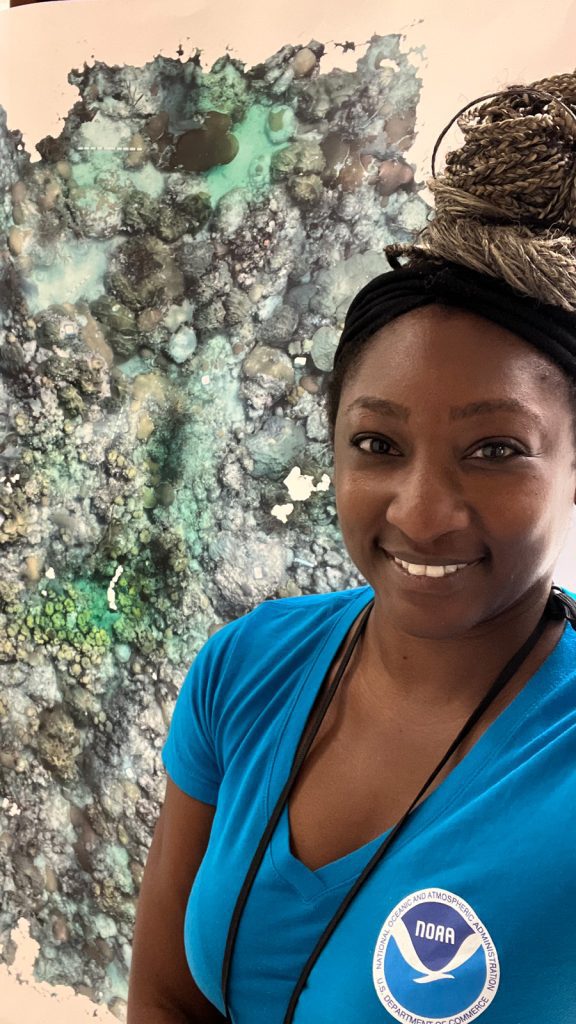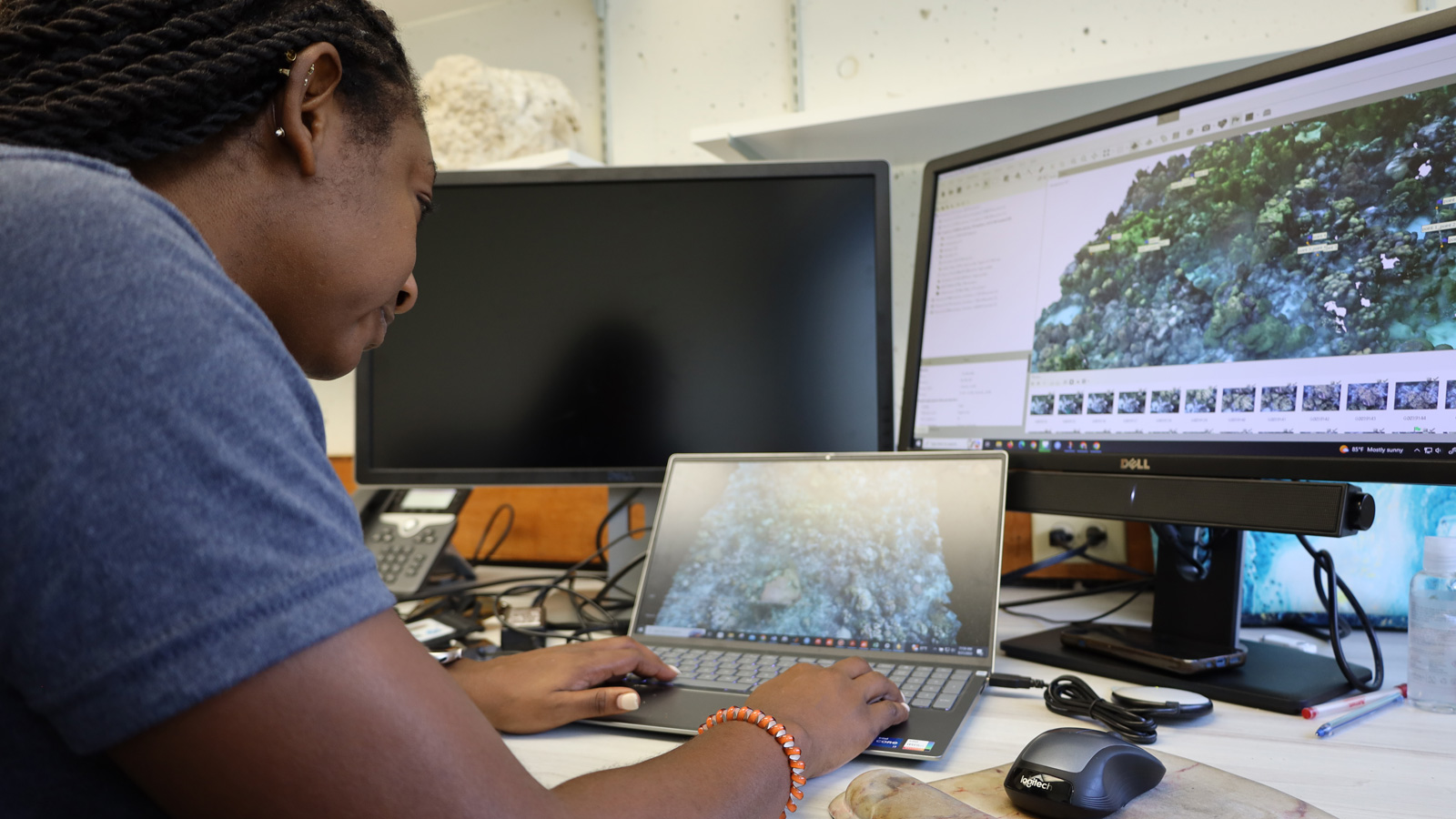In honor of Black History Month, NOAA’s Atlantic Oceanographic and Meteorological Laboratory (AOML) spoke with Oceanographer Kayelyn Simmons, PhD, about her role at AOML and what Black History Month means to her.
Kayelyn is a federal oceanographer at AOML, leading benthic habitat characterization studies using 3D mapping with the Ocean Chemistry and Ecosystems Division. Her work supports the National Coral Reef Monitoring Program, Mission Iconic Reefs, and the Port Everglades Dredging Expansion project. Originally from Atlanta GA, she graduated from HBCU Hampton University with a BS in Marine Environmental Science, achieved her MS in Marine Biology from Nova Southeastern University, and recently completed her doctoral degree in Marine, Earth, and Atmospheric Science at North Carolina State University. Check out her latest 3D mapping projects on the AOML’s new Digital Coral Morphology website.

Q: What drew you to your current career?
A: In my career, I have focused on science that relates to better management practices and/or conservation. I love reef fish and want to make sure they have suitable habitats throughout their life cycle. 3D mapping was essential in my past research to assess the health of habitats and the effectiveness of no-take marine zones, and to observe how each coral species contributes to the 3D structure of coral reefs.
Q: What do you want people to know about your work within NOAA?
A: 3D mapping is a fine-scale monitoring tool that is non-invasive and can capture 3D images of complex structures over time. Broadly, this work contributes to ecosystem-based management, coral restoration, and recognizing the devastation of climatic events such as hurricanes and coral bleaching.
Q: What does Black History Month mean to you?
A: Black History Month is a time to celebrate our achievements (aka #BlackExcellence), paying homage to highly impactful and historical figures, but also acknowledging our history and the challenges past generations faced for future generations to have freedom and better quality of life.
Q: How do you celebrate Black History Month?
A: I really focus on the positive exposure for the African American community. I enjoy learning new facts about my culture and spreading positive facts about famous Black leaders, scientists, and inventors on social media.
Q: If you could pick a personal motto, what would it be?
A: “All I can do is be me” – kind of simple but really speaks to the values of self worth, self acceptance, and perseverance. My career – especially with being a double minority, Black woman in science – can be tough and sometimes isolating. But holding on to the fact that I am doing my passion and having an impact encourages me to keep “doing me” despite the challenges.
Q: Who is your favorite Black Scientist and why?
A: Mae Jemison. She is the first Black woman in outer space – it has to take guts and a lot of dedication to be the first! I can not imagine the doubt she received but I bet the respect and accolades that followed after visiting space meant the world to her, just as much as she meant the world to so many aspiring black women scientists including myself!
